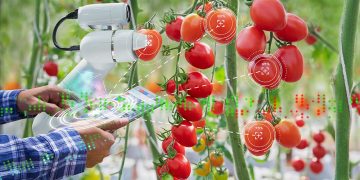Prices for greenhouse vegetables at the beginning of the season bite. Botanists and power engineers of Penza State University (PGU) are working on these tasks together to meet the needs of the domestic market and keep prices down.
Teacher-led students are designing new alternative energy installations and simulating smart greenhouses that speed up crop maturation. “We have created a plant control system based on computer vision with artificial intelligence algorithms,” says Vasily Ashanin, head of the Department of Power Engineering and Electrical Engineering. “We started work three years ago and received a grant as winners of the International Competition for Environmental Projects. The project is based on the principle of energy saving.”
Previously, agricultural technicians took into account parameters such as temperature and humidity. In Penza, attention was paid to the distribution of sunlight, its quantity and spectrum of rays. It turned out that in order for the plant to develop correctly, it is necessary to use red light at an early stage, and purple at a later stage.
Investors are interested in creating a product independent of the external market
“Initially, our system allowed us to set the correct light according to the requirements of biologists, but this gave us the opportunity to be only contemplatives, not creators. We decided to deepen the study and, at the next stage, endowed the system with the ability to independently recognize which light characteristics are relevant for the plant at a particular moment of development. To do this, we created an automated lighting system based on RGB diodes, in fact, developed the “brains” and automation of the project,” explains Ashanin.
The design looks simple. In the center is a rotating camera that takes pictures of the plant in three projections. It runs constantly, displaying images every 30 minutes. Based on these images, a 3D model is built. A high-resolution camera allows you to adjust lighting, humidity and temperature online.
Now the development is being tested by biologists who evaluate the effect of changing the light spectrum on plant development in real conditions. The experts of the working group on energy efficiency at the Federation Council of Russia in Kazan became interested in it. They cooperate with private investors and implement projects based on PPP. And they are especially interested in creating a unique product and not depending on the external market.
In studying the power of sunlight, PSU scientists went further and set about creating an installation that could be used as an alternative energy source. A study conducted in the Volga region showed that the average wind speed does not exceed 3-4 meters per second, and the efficiency of solar energy is approximately 20 percent. Therefore, it is advisable to develop a project for a combined power plant. It will allow you to achieve maximum economic benefits. The southern regions of the country, where solar energy is more accessible, have also become interested in this development.


































